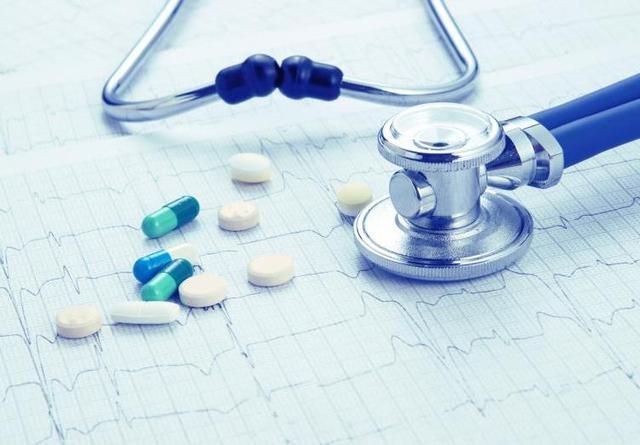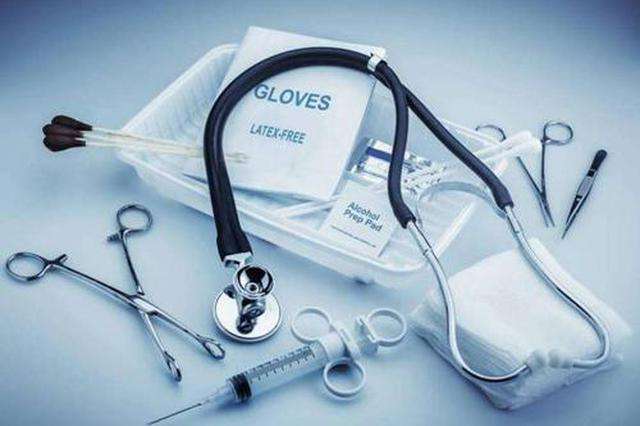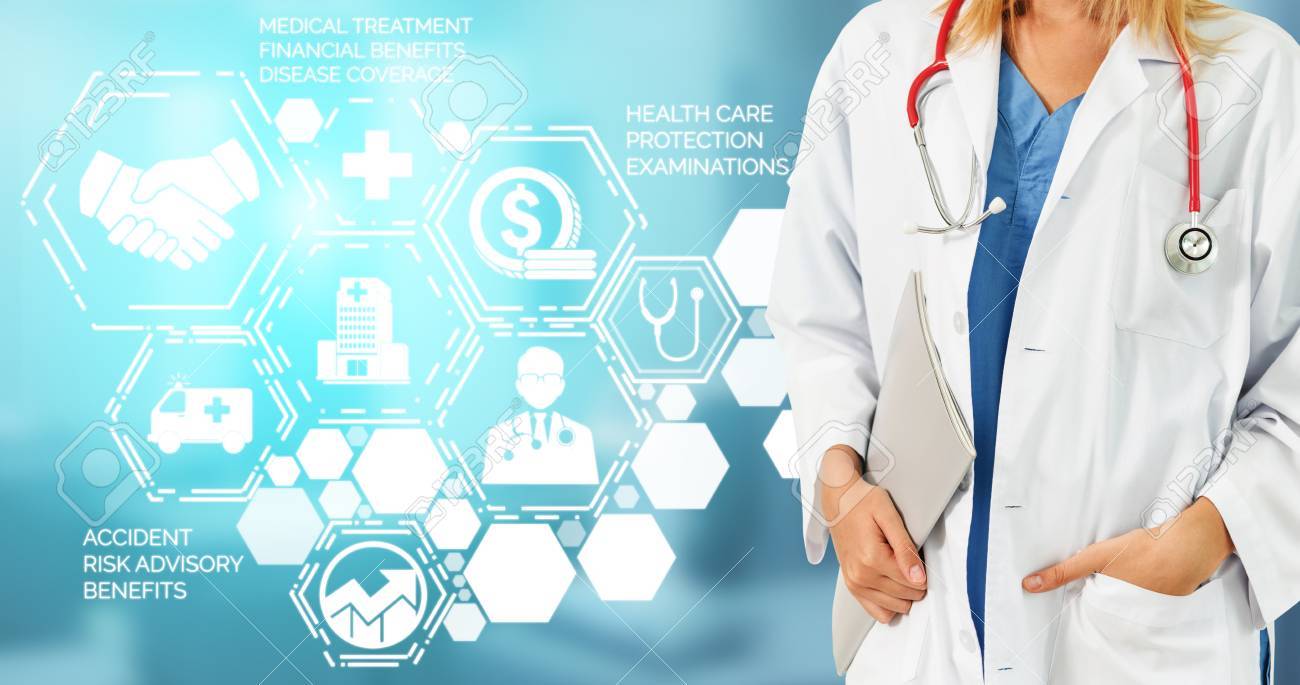Eight Major Changes in China's Medical Industry in 2022
Category:
News and Information
Industry News
Time:2021-12-15
2022 Eight Major Changes in China's Healthcare Industry
2021 The global economy is gradually recovering from the huge impact of the COVID-19 pandemic. Our country has effectively controlled the spread of the epidemic, and the economy has prioritized recovery and maintained a continuous growth momentum.
Looking ahead 2022 With the gradual control of the epidemic, and against the backdrop of a large population, aging, technological innovation, and deepening healthcare reform, the potential of China's medical and health industry will be unleashed at an accelerated pace. This article analyzes eight major development trends in the healthcare industry, which will help enterprises grasp market development directions and better discover growth opportunities.


Promoting the Sanming Model is the focus for the coming period
of national medical reform work
2021 The State Council, the Medical Reform Leading Group, and the National Health Commission, among others, have made deployments to deepen the experience of pharmaceutical and health system reform, learn from and promote the clear reform paths and basic requirements of Sanming's medical reform experience, persistently grasp implementation, consolidate reform achievements, and ensure the benign operation of new mechanisms.
2022 In the coming period, the important direction of medical reform is to deepen the Sanming Model, adhere to 'three medical linkages', rationally allocate medical resources, regulate pharmaceutical prices, and fully mobilize the enthusiasm of medical staff from aspects such as salary, career development space, and practice environment.
Carry out centralized volume-based procurement of drugs and consumables, gradually expand the scope of procurement, strengthen procurement and inventory management of medical institutions, and adapt to the requirements of centralized volume-based procurement. Following the path of freeing up space, adjusting structures, and ensuring smooth transition, standardize diagnostic and treatment behaviors, reduce costs of drugs and consumables, reasonably adjust medical service prices, advance salary system reform, and promote innovation and healthy development of the pharmaceutical industry.
Implement a dynamic adjustment mechanism for medical service prices, reasonably determine the total amount of price adjustments, and within the total amount, highlight key areas and adjust medical service prices with both increases and decreases. Comprehensively deepen the reform of salary systems in public hospitals, and promote public hospitals to reasonably determine their internal salary structures based on different levels and types of hospitals. Deepen the reform of medical insurance payment methods, promote a diversified and composite medical insurance payment model mainly based on diagnosis-related group (DRG) payments, gradually reduce the proportion of fee-for-service payments from medical insurance funds, and increase the proportion of medical insurance payment methods such as DRG payments, by-disease-score payments, per-diem payments, and per-capita payments for outpatient services. Guide medical institutions to improve clinical pathways, intensify training and promotion of diagnostic and treatment norms, strengthen supervision, and improve the standardization level of medical services.

Increase Investment to Achieve High-Quality Development of Public Hospitals
Public hospitals are the main body of China's medical service system, 2022 In the coming period, increasing investment in public hospitals, promoting their high-quality development, and meeting the growing medical and health service needs of the people is an important trend. National medical centers, clinical medical research centers, regional medical centers, and traditional Chinese medicine inheritance and innovation centers should be planned and established based on existing resources to form clusters of key clinical specialties.
Give play to the leading role of public hospitals in urban medical groups, establish closely integrated urban medical groups led by tertiary public hospitals or hospitals representing the medical level of the jurisdiction (including privately run hospitals, traditional Chinese medicine hospitals), with other hospitals, primary healthcare institutions, public health institutions, etc., as members, comprehensively responsible for integrated and continuous medical services such as prevention, treatment, rehabilitation, and health promotion for residents within the network. Establish and improve a tiered, layered, and diversionary major epidemic treatment system.
Public hospitals should build clinical specialties guided by the clinical needs of major diseases, promote innovation in medical service models, promote multidisciplinary diagnosis and treatment models, and improve the operation management system, comprehensive budget management, and performance distribution method reforms. Comprehensively push forward comprehensive reform and abolish all drug markups, gradually break the profit-seeking mechanism, and adhere to the public welfare nature of public hospitals. Regulate medical service behavior, implement clinical pathway management, and establish tracking and monitoring of auxiliary drugs, unusually high-volume hospital drug use, and high-value consumables.

Centralized Procurement of Drugs and Consumables Will Bring Major Industry Changes
2018 Launched at the end of the year 4+7 Drug centralized procurement gradually expanded its scope thereafter, until it covered the whole country. As of 2021 year 6 month, national centralized volume-based drug procurement has been carried out for 5 batches, covering 218 types of drugs, and the average price reduction of selected products reached 54%。2020 Centralized procurement extended from drugs to high-value consumables. As of now, two batches of nationally organized high-value consumables centralized procurement have been conducted, with an average price reduction of selected coronary stents by 93% and the average price reduction of selected artificial joints by 82%。
The "14th Five-Year Plan" for National Medical Security points out that centralized volume-based procurement of drugs organized by the state should be implemented on a regular and institutionalized basis, and the scope of centralized volume-based procurement of high-value medical consumables organized by the state should be continuously expanded. By 2025 year, the number of drug varieties procured through national and provincial centralized volume-based procurement in each province will reach 500 or more, and the number of high-value consumable varieties will reach 5 major categories or more.
The normalized centralized procurement will continue to have an industry impact on drugs and medical devices. The Joint Procurement Office for Drugs pointed out that the room for price reduction in centralized procurement mainly comes from three aspects, including reducing marketing costs by direct supply to hospitals, reducing financial costs by timely payment, and reducing production costs through small profits but quick turnover, squeezing out unreasonable expenses that have long existed in the circulation sector.

The epidemic has led to increased investment by enterprises in the pharmaceutical and medical device industry
and increased innovation.
Sustained epidemic prevention and control is expected to enable the government to further increase investment and support for innovation in the pharmaceutical and medical device industry while carrying out medical insurance cost control and reducing unreasonable drug and consumable prices. Several sectors of the pharmaceutical and medical device industry closely related to the diagnosis and treatment of COVID-19 may be affected, and the supply and demand for some medical devices will increase for a certain period, such as IVD , in vitro diagnostics, low-value consumables, life information monitoring equipment, and home medical devices, etc.; in addition, biological products such as vaccines, immunoglobulins and other blood products, and interferon, etc.
IVD The rapid growth of the industry and third-party testing from 2020 The impact of the epidemic began to show during the year of the pandemic. With the normalization of epidemic prevention and control, the revenue from COVID-19 nucleic acid testing expanded, and the revenue from regular testing (non-COVID-19) recovered well, resulting in a significant increase in revenue scale. The thinning effect of fixed costs was obvious, which led to further profit growth. In terms of vaccines, due to the longer R&D cycle, the performance growth brought about by production and vaccination began to be reflected in the year. 2021 In addition, materials related to infectious diseases are reserved for prevention and control needs. The market size of this part will not necessarily decrease rapidly with the decline of the epidemic.

Medical insurance payment methods force medical institutions
to standardize medical practices
China has basically formed a multi-level medical security system framework with basic medical insurance as the main body, medical assistance as the bottom line, and supplementary medical insurance, commercial health insurance, charitable donations, and medical mutual aid developing together. The number of people covered by basic medical insurance exceeds 13 100 million, with nearly 12 100 million people covered by urban residents and employees' medical insurance, and 2 100 million people covered by the New Rural Cooperative Medical Scheme (NCMS), with the coverage rate remaining stable at 95% above. The reform of medical insurance payment methods continues to deepen, the centralized volume-based procurement of drugs has become normalized, the scope of centralized volume-based procurement reform of high-value medical consumables is expanding, the medical service price adjustment mechanism has been initially formed, and the medical insurance drug catalog is dynamically adjusted.
According to the "14th Five-Year Plan" for National Medical Security, by the year 2025 the medical security system will be more mature and established, basically completing the reform tasks in important mechanisms such as benefit guarantee, fund operation, medical insurance payment, and fund supervision, as well as key areas such as medical and pharmaceutical service supply and medical insurance management services. The standardization, refinement, convenience, and coordination of medical security policies will be significantly improved.
The reform of medical insurance payment methods continues to advance. Most of the unified regions have carried out payment reforms based on disease types, per capita, and service units. More than 200 cities have implemented more than 100 disease types based on per-disease payment. The reform of payment based on Diagnosis Related Groups (DRG) pilot projects are being implemented simultaneously with clinical pathway management to ensure the safety and quality of medical care. Medical security reform forces the management of designated medical institutions to be more standardized, guiding and regulating the healthy development of the medical system.

Healthy China Action
promotes the rapid development of the health management industry
In today's rapid development of information technology, the country is vigorously promoting the "Internet + " medical model. Health medical informatization and health medical big data will be integrated in an orderly manner. Individual fragmented health medical data will be integrated into a human whole-life cycle health database, and health management services will inevitably undergo innovative changes.
With the high degree of concentration of health medical data, health insurance will actively participate in the development and application of health medical data, establish new insurance projects, and improve insurance income by actively promoting population health management. The model of population health management services will be reshaped. Health management will be guided by health medical big data, promoted and promoted by health insurance, and health insurance-driven preventive health management will become the mainstream model.
The development of health promotion provides good development opportunities for health management. The main body of health promotion is mostly government departments, with strong public welfare, and is easily accepted by society and individuals, which provides a foundation for health management. Health promotion also provides policy and environmental support for the development of health management. The implementation of some health promotion actions has, to a certain extent, promoted government departments to gradually integrate health promotion into their work plans and policies, objectively forming a good environment supporting the development of health management.

Institutions that prioritize the construction of digital medical standards
will gain enormous development dividends
Various policies guide the vigorous development of "Internet + medical health," including the construction of a national health information platform, the application of health medical big data, the acceleration of the development of "Internet + medicine," and the active development of "Internet + drug circulation" in four aspects. It will connect various medical and health institutions and health data resources to the platform and realize interoperability, deepen the application of health medical big data, support the establishment of independent Internet hospitals based on physical medical institutions, accelerate the establishment of telemedicine networks and platforms, and implement further improvement of medical service action plans based on "Internet + ".
With the continuous iterative development of mobile Internet, especially the arrival of 5G era, the health industry will undergo major structural changes. Applying Internet and other information technologies to expand the space and content of medical services, and building an online and offline integrated medical service model covering pre-diagnosis, diagnosis, and post-diagnosis, this is a major turning point opportunity for medical and health services. Institutions with complete services and priority construction of standards will gain enormous development dividends. With the development of medical big data and the continuous innovation of analysis methods and other technologies, there will be more and more scenarios that can accurately use medical and health big data for analysis and prediction, AI health will also develop rapidly.

Technological innovation in the medical and health industry drives high-quality development
Innovation drives high-quality development, and innovation in the health industry is particularly important. The country should implement major scientific and technological projects and national key research and development plans, and deploy public scientific and technological activities such as basic frontier, social public welfare, and major common key technologies supporting the development of the health industry, promote the construction of national translational medicine major infrastructure, and promote the construction of national clinical medical research centers.
The focus of technological innovation in the medical and health industry is to promote the quality improvement and innovation of drugs and medical devices. Priority review and approval should be given to urgently needed new drugs and drugs for rare diseases. Medical device standards should be revised, and the rate of adopting international standards for medical devices should be improved. Promote the demonstration application of innovative products of high-performance medical devices and increase the promotion efforts.
In addition, the research and transformation of key technologies such as next-generation gene sequencing, tumor immunotherapy, stem cell and regenerative medicine, and biomedical big data analysis should be continuously accelerated. The application of artificial intelligence technology in medical image auxiliary interpretation, clinical auxiliary diagnosis, and multi-dimensional medical data analysis should also be accelerated, and the entry of qualified artificial intelligence products into clinical trials should be promoted. Support enterprises in promoting intelligent health management, sports and fitness, and other electronic products that collect health information in a wearable, portable, and non-contact manner.



Keywords:


